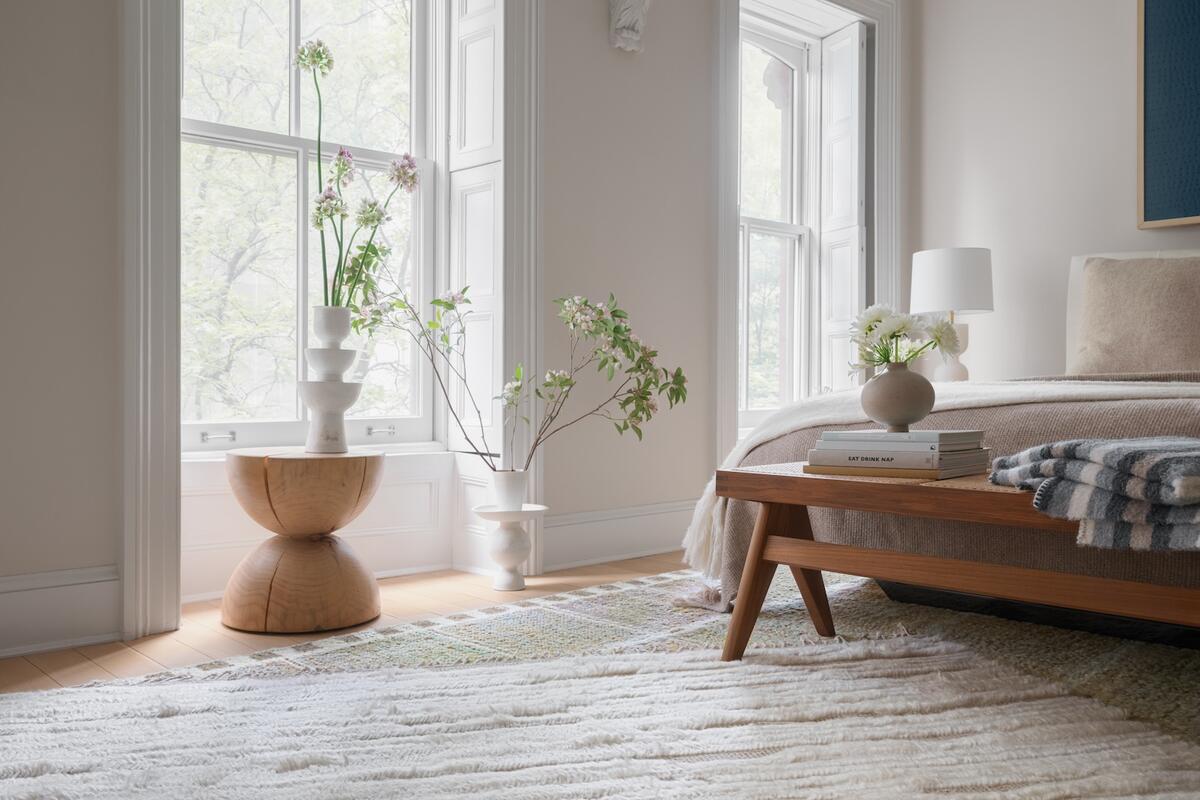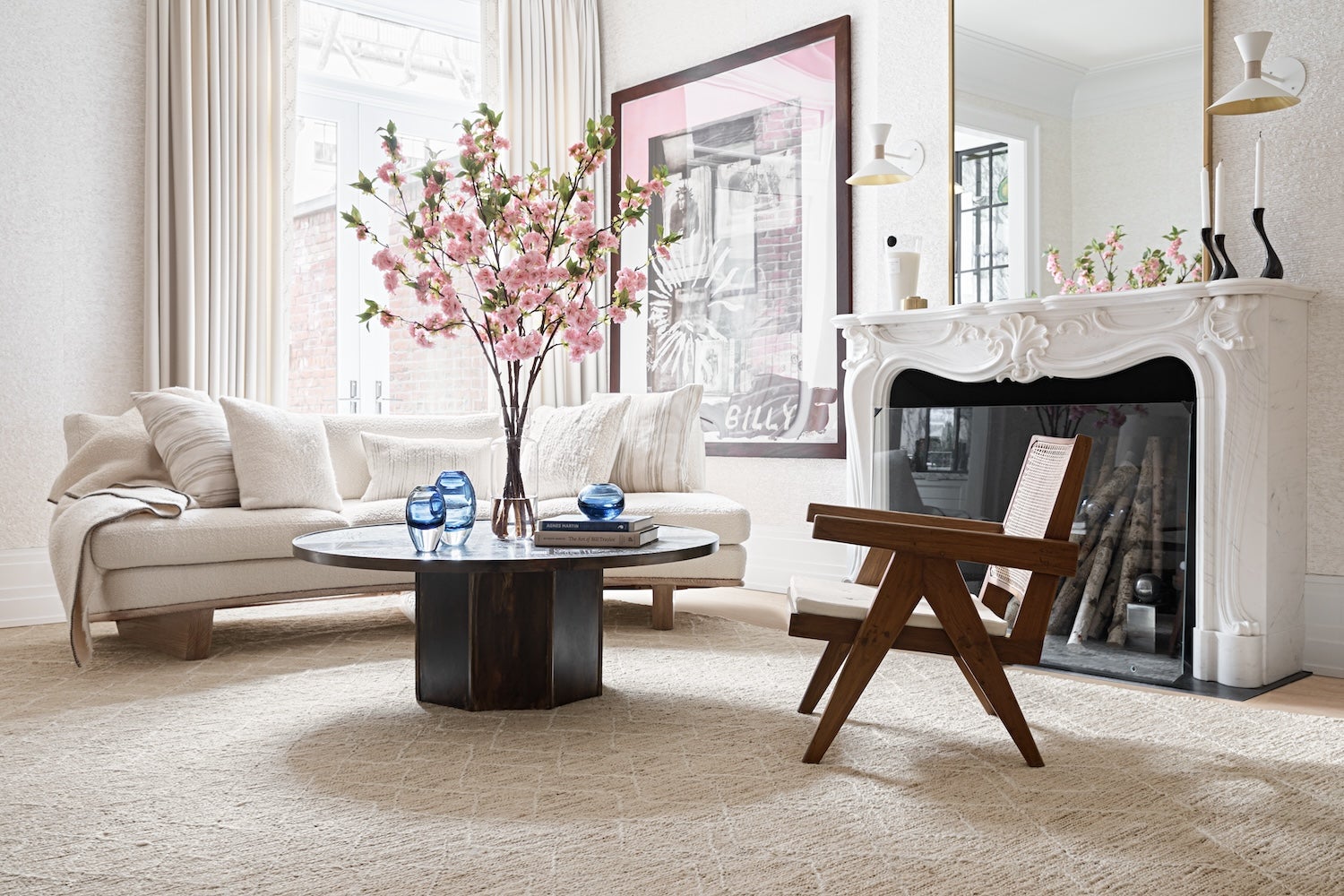Recent visitors to Stark’s website might have noticed something new. It’s not a debut collection, a buzzy collab or a metaverse activation. What the trade-focused purveyor of rugs and carpet has added is dollar signs.
For the first time ever, Stark has publicly listed prices for some of its inventory and opened up sales to the general public. The change is limited to in-stock rugs—carpets and custom remain walled off to the trade. Still, the move represents a new reality for the brand, one in which homeowners, not just designers, can click to buy its product.
For those outside the design industry looking in, the idea of putting prices on a website probably seems insignificant. To insiders, it may feel like a big deal. For Stark CEO Chad Stark, it’s somewhere in the middle.
Stark has long framed the company’s strategy as “trade preferred” (as opposed to “trade exclusive”), meaning, in essence, that it would continue to give preferential pricing and services to designers but wouldn’t refuse to sell to homeowners. Last year at an internal meeting, he looked to make it the company’s official policy.
“We continue to focus and build our business around the trade, but we want to engage homeowners where it makes sense as the world changes,” Stark tells BOH. “All of our showrooms have walk-in traffic, [and our official policy for sales reps became]: Stop making someone feel uncomfortable if they’re not working with a designer. If they walk in and want to buy something, you can sell it to them.”
Last summer, the brand rolled out a new website allowing consumers to buy samples, and Stark says the rush of interest took him by surprise. The next logical step? Let them buy a finished product—in-stock rugs, which make up 9 percent of the company’s sales. “[Let’s] open it up direct-to-consumer and see what happens,” says Stark.
Trade exclusivity can be a charged issue. For many designers, the subject conjures up a powerful nostalgia for a lost era of design—one in which pricing was hidden behind thick chintz curtains, and design centers routinely kicked out members of the general public.
Whether the industry really was so much better then is up for debate. But there’s no doubt that it was simpler. The rules around who gets to buy what and at what price are all over the place in the digital age. Fabric brands will hide pricing behind a trade login but sell yardage on open-to-the-public resale sites like DecoratorsBest. Furniture brands will cater to the trade but quietly manufacture the same products for retailers under a different brand name. An oft-heard designer lament: “Everyone sells to everyone now.”

Despite a chaotic, increasingly open landscape—or maybe because of it—the concept of exclusivity still has real pull. Trade-oriented brands still spend tens of thousands of dollars building websites where transactions and pricing are hidden behind a login, and many showrooms still refuse to work with consumers. Last year, Oklahoma-based fabric company Fabricut made headlines by pulling its entire selection from resale sites—costing it a few hundred thousand in annual revenue—and vowing to do business with the trade only. The move was cheered by designers, who shared messages of support on social media.
The fact that a brand is willing to take a real financial hit in the name of trade exclusivity demonstrates the stakes, and helps explain why selling a handful of rugs online is a potentially risky move for Stark.
There’s how people feel, and then there’s how they buy. Despite selling some of their wares to the general public through resale sites, fabric brands like Kravet and Schumacher continue to do a brisk business with the trade. Fabricut’s play for designer loyalty may pay off in the long term, but it’s fair to say that designers have not abandoned its competitors.
Stark has some history here. The company in general, and Chad Stark in particular, has proven willing to experiment with ways of opening up to new audiences, offering up an offshoot collection sold through Chairish and Perigold in 2019 (and some inventory on One Kings Lane before that). Just last year, the brand’s creative director (and Chad’s cousin) Ashley Stark Kenner launched an eponymous e-commerce brand marketed to a consumer audience.
Though Stark himself has fielded some concerned calls from designers over the years, he says that the company’s trade business has not seen any meaningful dips that correlate to these moves.
It’s worth reiterating that, despite flirting with consumers as a customer base, Stark has never veered away from offering protective pricing to the trade, and it continues to wall off big chunks of its selection for designers only. The brand’s thesis, in a nutshell, is that if you deliver on the things that matter to designers, a few public prices or consumer sales are beside the point.
“When we ask designers why they buy from Stark, no one says it’s because Stark is exclusive, even when we were more exclusive,” he says. “They tell us three things: peace-of-mind service, diversity and innovation of assortment, and convenience and accessibility.”
An informal survey of a handful of Stark customers seemed to back him up—basically. “I don’t care about the online stuff,” says Connecticut- and Florida-based designer Billy Ceglia, a longtime Stark customer. “My contract explains how I mark up, and it’s agreed upon. It doesn’t really matter who’s selling it for what price. It is our job to be sure we’re getting it for a fair price.”
Like Ceglia, Nashville designer Stephanie Sabbe says the move to list prices online won’t cost Stark her business. But, echoing the sentiments of many designers, she expressed exasperation about the occasional client going rogue. “I do care [about brands posting prices], because [while] we have it in our contract that clients have to buy through us, sometimes brands [that] list prices will have deals or coupons and clients will buy direct and risk it, like, ‘What is my designer really going to do?’” she says. “Most of our clients would not do that, and we’re honest about pricing anyway, but it does happen.”
Of course, there are plenty of designers who don’t care at all if brands list prices online—especially if they don’t charge their clients a markup on product. Even if they do, many have argued that making prices public would help educate consumers on what good design really costs.
“The history of interior design has been at odds with retail, the internet, and making information about our trade resources more accessible—everyone needs to be on the same page about what it costs,” San Francisco designer Noz Nozawa told BOH in 2021. “We as an industry can continue to bemoan greater consumer access to trade-only resources, or we can be at the head of these conversations, explaining how what designers do is so much more than sourcing product.”

Some designers welcome public pricing purely for logistical reasons—it’s easier to quickly scope out prices and availability online by visiting a public-facing website than it is to either call a rep or log in. One of the ironies of pricing transparency is that it’s typically framed as a “designers versus consumers” issue. But for many trade companies, the goal of offering more information online is largely to make things easier for their sales staff—since the number-one question any trade rep answers is typically, “How much does it cost?”
Stark says one of the happy accidents in launching Ashley Stark Home was that, even though the brand was aimed at consumers, it ended up attracting a trade audience. “It actually led to a lot of new designers who weren’t previously buying from us. … They had never applied [for a Stark trade account] because they had misconceptions about our price point,” he explains. “Once they started seeing our prices, even at the retail price level, they said, ‘Oh, maybe my clients actually can afford Stark.’”
And despite opening up portions of his business to consumers in a variety of ways, Stark says that only 5 percent of the company’s sales are to homeowners. “In 2024, we have zero initiatives as a priority in direct-to-consumer,” he says. “We serve maybe 20 to 25 percent of the interior designers in the United States—that’s a significant number, but why try to build a new business when we could do so much better in our core business?”
Stark’s rug experiment may be the first trickle of a deluge in trade brands listing public pricing—or a drop in the bucket. Either way, it seems clear that the broader industry trend is toward more transparency and more access for consumers, not less.




























